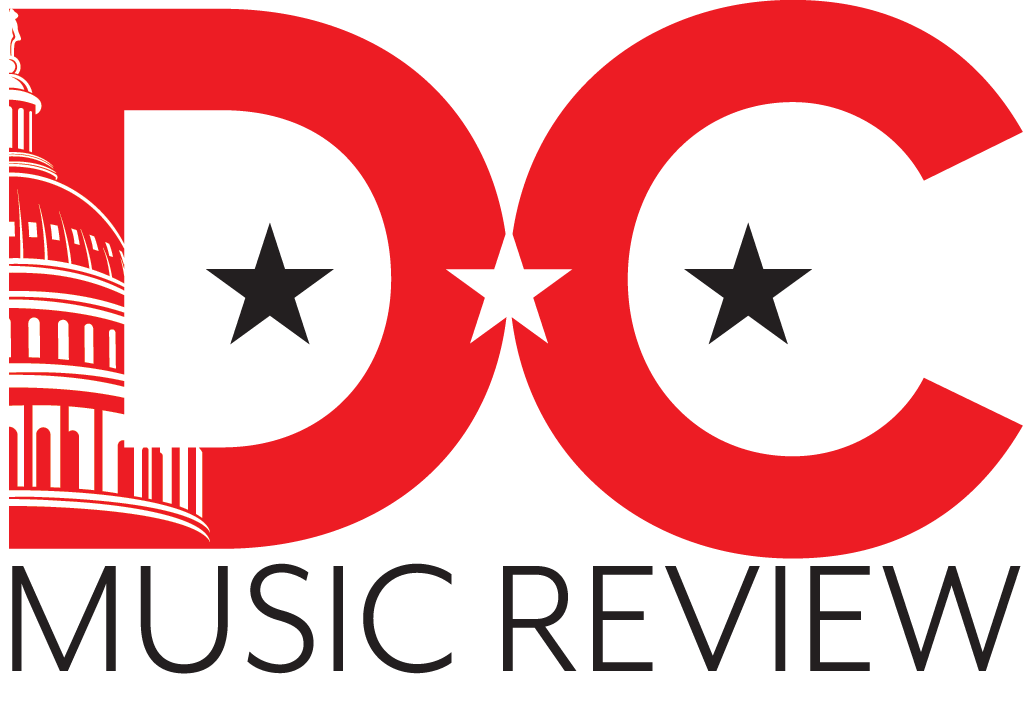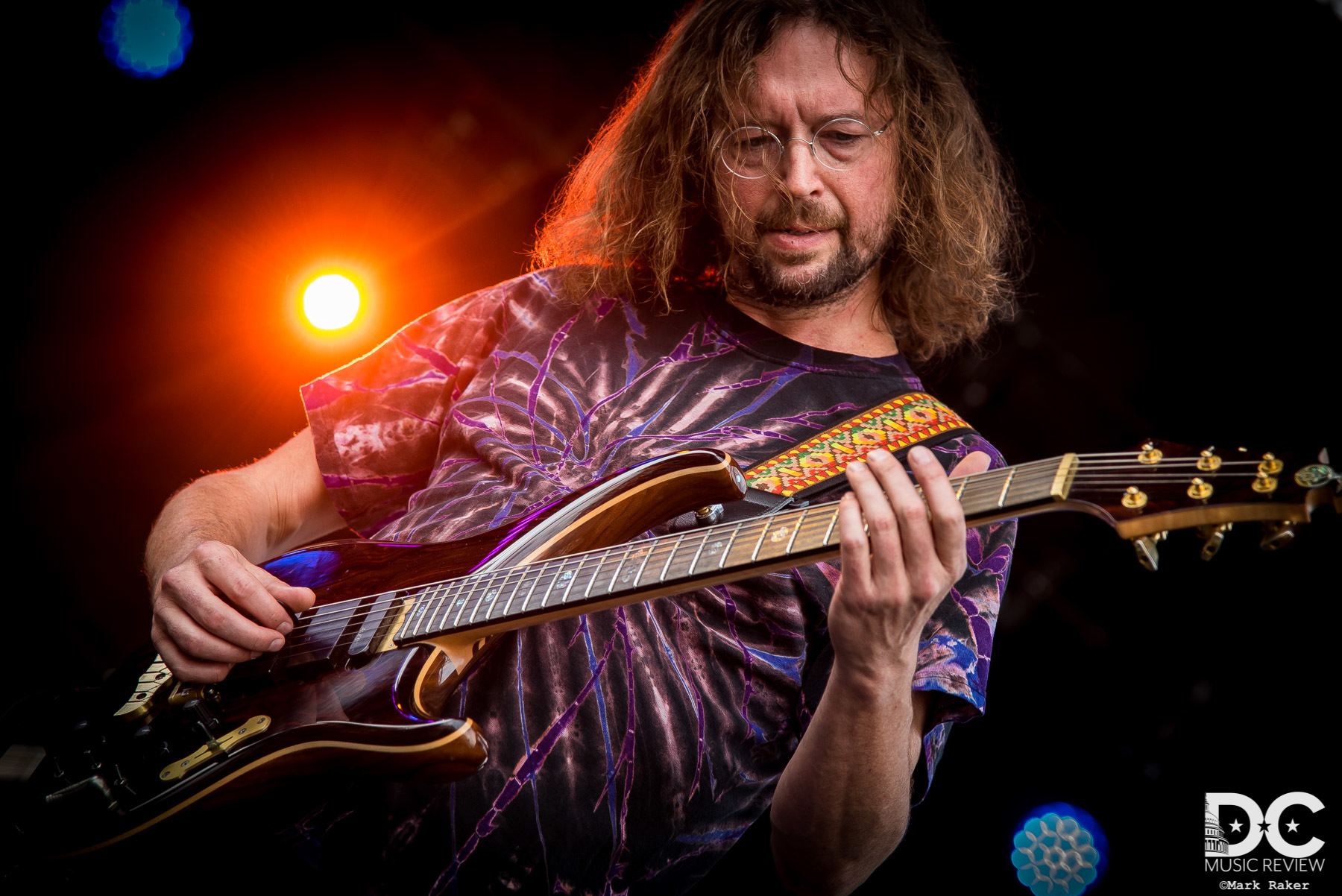Karin McLaughlin caught up with John Kadlecik shortly after his 4-night Summer Solstice June run at Gyspy Sally's in Washington, D.C. June. John was gracious enough to talk with us about a wide range of topics.
Karin McLaughlin: Hi John, I don’t really know where to start. It’s hard to just jump in with someone that has such a long resume of playing for so long with different people and in different bands – I guess, let’s go back to the beginning. You’ve been playing music for a long time – you started on the violin, correct?
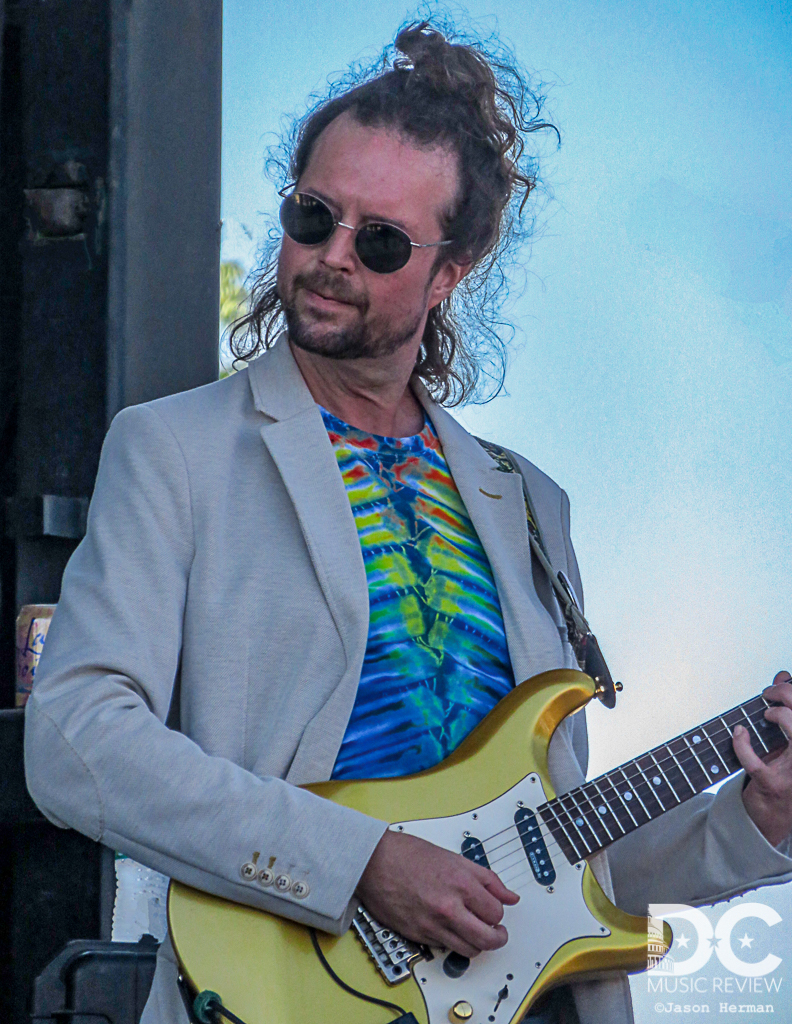
John Kadlecik at Lockn 2017
John Kadlecik: That is correct. Little bit of singing too (laughs).
KM: And then you moved on to a lot of other instruments, was there a kind of inspiration for each one that you decided to pick up or were you just like ‘ok, I’ve mastered this, now I want to try something new’?
JK: Uh, well I kinda started to teach myself guitar on a quest to learn more about improvisation. It was something that I was starting to get curious about as a musician and violin, the educational track that I was on for violin didn’t have much room for improvisation (laughs). So there’s a little bit there but it’s subtle in that world, whereas with guitar, it almost kind of comes built in, you know, some basic level of improvisation is built in to the guitar in ways, really only also with mandolin maybe. I’ve studied piano a little bit, I’ve found that to be challenging for improvisation as far as all the notes are there. I guess what it is with guitar is, you’ve got some of the starting points with improvisation as just sort of it being a hand shape thing that you can match up with the way the strings are tuned and frets are laid out.
KM: Do you ever still pick up a violin?
JK: Sure, yeah. When I was 19, I made the switch pretty much full time to a 5 string style violin and I’ve been playing 5 string, electric violin kind of looking at, sort of studying jazz and but also applying it to blues and jam band stylistic fusion type music.
KM: I like that you say studying jazz because you had a pretty formal education in music, right?
JK: Well, I started out self-taught, I taught myself how to read music first. You know, when I started studying violin formally, I sort of already understood the staphs and it was more initially focusing on the techniques and I kind of leapt ahead all over the place as a result. So I have a mix of techniques really – I have some formal training, a lot of self-taught guitar is mostly self-taught. In college, I picked classical guitar as a major as my instrument to major on but I dropped out after two semesters, so, you know….I did well enough at it, but it was one of those things – you had to pick one of these traditional educational tabs to be a music major in the school that I was in. Bass is related to guitar in a lot of ways, it’s applied very differently but the basic techniques are the same, it’s just what you do with it is very different (laughs).
KM: I feel like it’s kind of the right brain and left brain thing, where if you’re more right, you process things a certain way, but it’s similar for this because you have both the formal side of the education, with structure but then you also are in the improvisational school of music. How do you find those two elements, during both watching live music and performing it, sort of take over and change in different ways at different times?
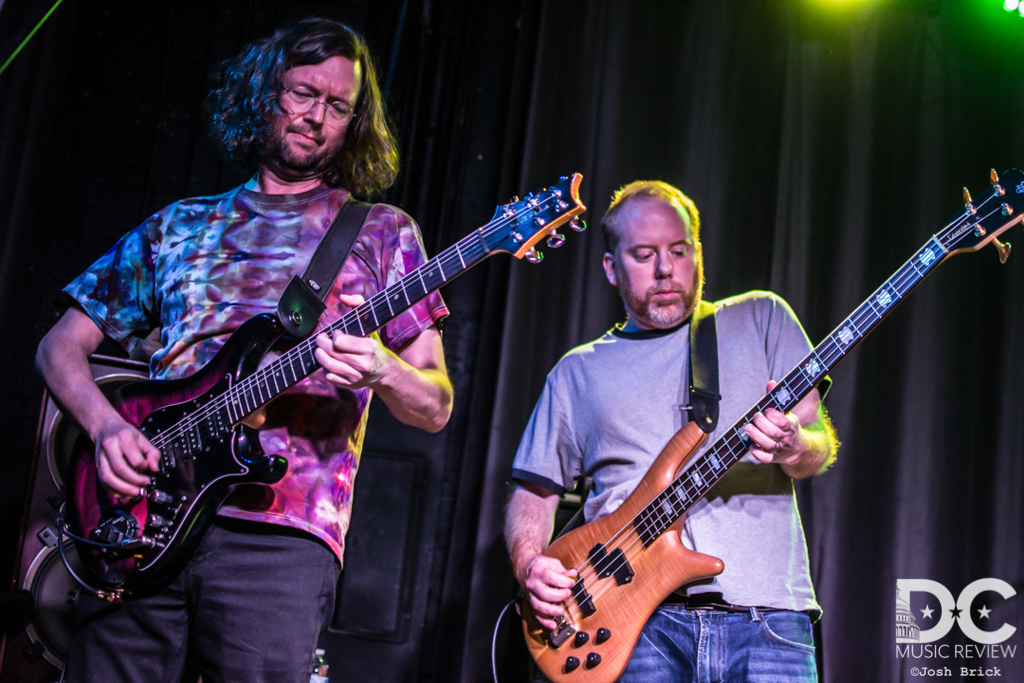
John Kadlecik performing with Larry Joseloff & DC Mystery Cats
JK: Well, I guess it’s more focused, from my late 20’s on in my life, has been more about the narrative story telling aspect of it. Like what kind of movie scene would this musical passage go well with? As opposed to thinking about notes or what I need to make my fingers do.
KM: Do you find that when you go see live music, you observe it in a different way depending on who you’re seeing? Like if you’re focusing more on technique and chords or if you just feel it and get into it more?
JK: Yeah, I mentioned earlier, you know, how guitar has a certain level of improvisation build into it but that built into it can also be a restriction. It is the kind of thing where I can hear a guitarist play through certain kinds of chord changes and I can tell if they have gone beyond those patterns and are connecting to the notes directly or if they’re still just kind of stringing together, sort of like the equivalent of a gymnastics routine – if they’re just making the fingers do this routine, this and then that and this and then that, as opposed to trying to build out a character in a story or describe a scene or just connect to the music directly as opposed to just manipulate an instrument. That is the thing that I can kind of hear right away. And people can still do amazing things while still just manipulating an instrument. There’s other instruments where I don’t know that I can as clearly hear the difference. I’m sure most instruments sort of inner set of – they’re easy to do on this instrument kind of thing. Like piano has a certain kind of challenge to it but I know it’s easy to play a lot of different notes at the same time (laughs). Whereas guitar, it’s nearly impossible to make more than 6 notes.
KM: You only got a certain amount of fingers, right?
JK: Right and then there’s strict rules for which notes those can be because of the way they overlap and stuff. Piano you can just mash the whole thing (laughs). You can just put your arm down on it or play a sequence of notes really really fast back to back in a way that’s more like percussion. There may be other things like that, for example, like the trumpet, I have no experience in that at all– that seems like wizardry to me (laughs).
KM: Is that the next challenge?
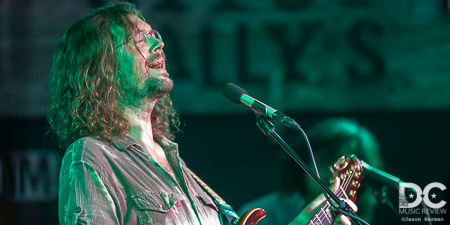
John Kadlecik during his Summer Solstice 2018 Run
JK: (laughs) No, I’ve dabbled in wind instruments and left it at that. I can kind of handle harmonica, I can bend some notes but the alternating breathing thing kinda throws me a little bit. I try to sort of think like a wind player occasionally, in that I have to stop playing notes to take a breath. I’ll try not to play more notes in a row then I could sing without taking a breath.
KM: You’ve also done a lot as far as bands, forming them, and working with different people. You’ve got Dark Star, Furthur, even The Mix, which we’re going to get into more because of the show at Gypsy Sally’s with Melvin Seals, but do you find that, I mean obviously, every one of them brings out something a little different in you, but is there something that you take away from all of that – for example, let’s talk just about Dark Star vs. Furthur – was there something that you can pull away and single out that was maybe your favorite aspect of them individually that was different than the other?
JK: Well, Dark Star was kind of like playing in a Bluegrass Band a little bit. There were rules – they weren’t restricting rules, they were just boundaries. They still had an enormous amount of ‘do anything you want within these boundaries’ and the boundaries aren’t so much right or wrong rules, they’re like ‘don’t forget to tell the story’ (laughs). The song has a story, it has images, but even then - within that, there are containers within sort of The Grateful Dead concert experience where even those rules get thrown out (laughs). It doesn’t even have to be – it can atonal and arhythmicy, it can get beyond free jazz, which is just totally free music. Even though it still sort of had the rule that the first half was more rhythmic and the second half was less percussive (laughs).
KM: I wouldn’t commonly associate the two words Grateful Dead and rules together (laughs).
JK: Right, but never the less, that’s the thing, if you really wanna see what music without rules is, listen to like Derek Bailey (laughs) I mean they get there, but even to get to music without rules, you have content, you have some context of music with rules.
KM: Gotta have rules to be able to break em right?! (laughs)
JK: Right or when you adore the rules, it means more when you break them. When you’re willing to break a rule you adore, it has a whole different energy than just smashing a rule that you hate (laughs). And there are rules that we adore that make reggae music reggae music and that make bluegrass music, bluegrass music. There are identifiable components about Grateful Dead music that are similar and you can always take a Bill Monroe song and play it in a Bob Marley style or you can take vice versa, you know? You can take Grateful Dead Songs and play them in whatever garage band style you want to make up or you could play it in a reggae style or a bluegrass style or you can play it in a blues style or you can play it in Grateful Dead style. To me, I play Grateful Dead style and I elevate it – I don’t just consider it a subset of rock, I consider it its own world the way bluegrass or reggae are distinctly identifiable. And you can play, quite conversely it’s easy to play a Bill Monroe song or a Bob Marley song in a Grateful Dead style. For some reason people don’t want to do that and I tend to suspect it’s because they don’t know how because they have some respect. Nothing else is really held back by stylistic respect in the music world (laughs) so I’m guessing it’s more either lack of motivation or ability.
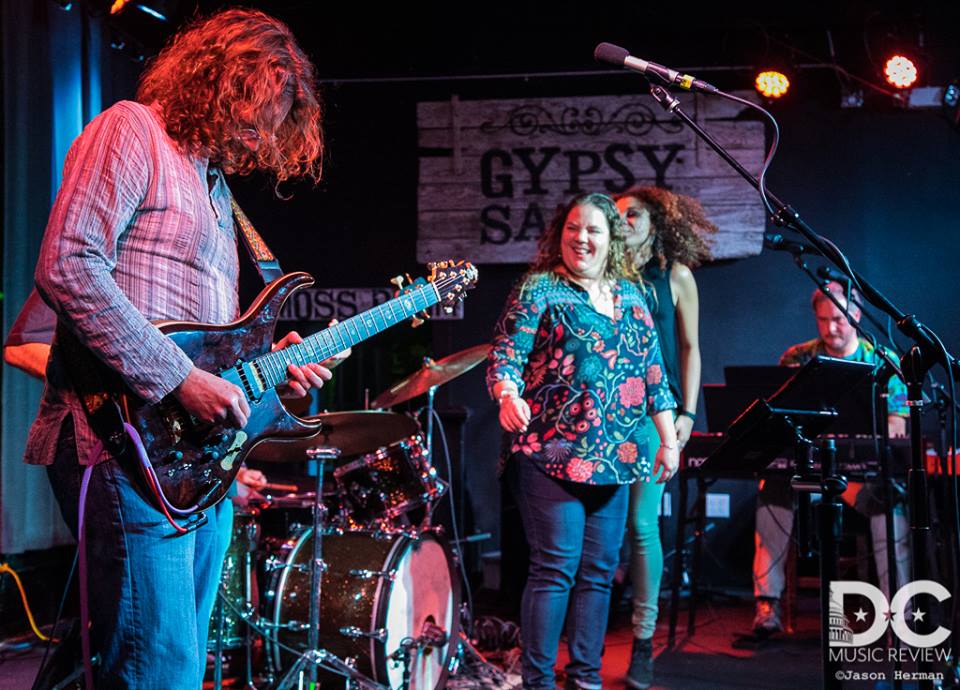
John Kadlecik's Thanksgiving Run at Gypsy Sally's with the DC Mystery Cats.
KM: Don’t know if this is common knowledge, but you are a local DMV resident – how do you feel about the D.C. Music Scene?
JK: The genre boundaries seem to be kinda high (laughs).
KM: You play at Gypsy Sally’s a lot, what is it about that venue that kind of fits your musical desire? I think they have a great crowd there and obviously you enjoy it but you’ve also played at The Hamilton and other spots, but I feel like I see you on Gypsy Sally’s calendar all the time.
JK: Well as a local resident, if I want to play a lot regularly, I want to play in the smaller places. I really like the owners and the team over at Gypsy Sally’s and I could say that’s true about the folks at The State Theater and The Hamilton. I’ve also played at the Howard Theater a couple times. Really surprised to not have been able to get into the 9:30 Club recently, but you know, it is what it is. That used to be the crown jewel of the D.C. club scene but that’s changed quite a bit over the past 5 years, I mean the scene.
KM: Yeah, especially now with The Wharf – you’ve got The Anthem, Pearl Street and everything else, it’s crazy. I’m a huge live music fan so I’m all for it – give me more venues, give me more bands, give me more variety.
JK: What happens with more venues though is that they try to outbid each other for the guarantees for the touring bands and that drives up ticket prices.
KM: Very true, I’ve noticed that with The Anthem, but what are you gonna do?
JK: I noticed it more with The Fillmore too.
KM: Now that we’ve brought up Gypsy Sally’s I wanna touch on The Summer Solstice Jam that you did a 4 night run of which I have heard amazing things about. Can you kind of go over how that came together, especially with all the people that were involved? Obviously, it took some planning and work to be able to bring those people together so can you tell us maybe what the inspiration for it or how it came together?
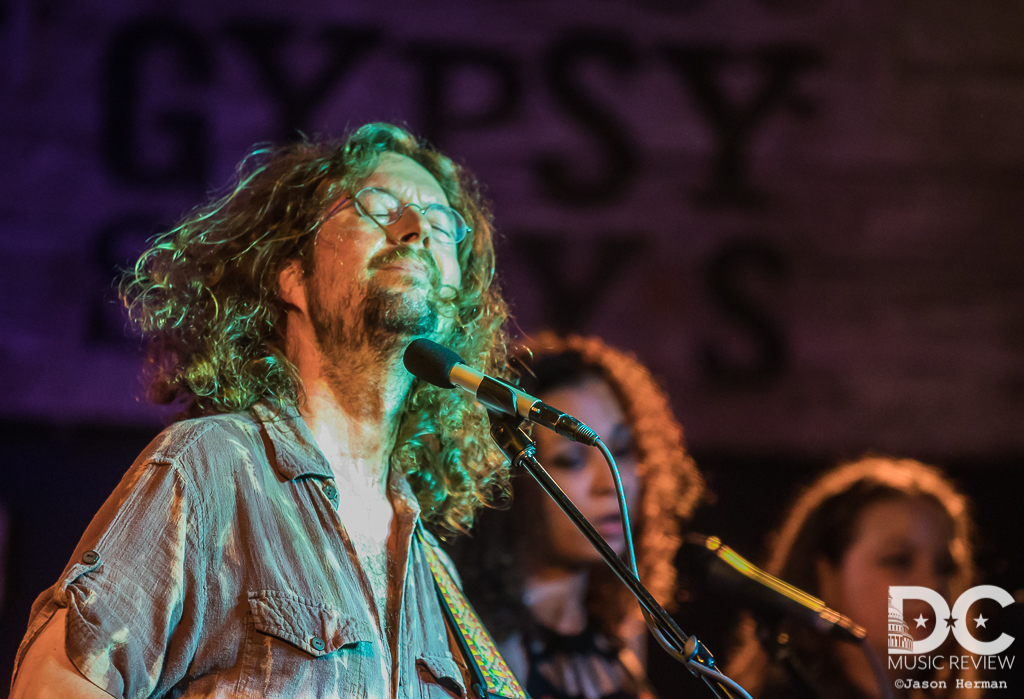
John Kadlecik at Gypsy Sally's during his 2018 Summer Solstice Run
JK: You know, I was just sort of trying to plan my various windows of playing everywhere from Europe to Japan, mostly in the U.S. but if I want to venture out across any oceans there is extra planning (laughs). But this was the time that I knew I was going to be in the D.C. area, you know, I’m a resident there but as a touring musician, that’s kind of meaningless – I live in hotels. I have a pile of stuff with a roof over it basically, in the D.C. suburbs. Occasionally, I get to sleep under that same roof. But this came up and I decided it was a good time to try to plan a four night run around it and then it was just checking to see who was available. It’s just kind of – you know I have a John Kadlecik Band project and it’s sort of starting to settle down as far as personnel – and as it turns out the keyboard player Benji Poreckie wasn’t available for a couple of the dates and so trying to figure out what to do in the wake of that and I’d done a few fun events with Melvin Seals recently, including some touring with Oteil and Friends and we hit it off as far as chemistry. When we’ve done big shows together, it’s still just been a show you know? And we’re playing mostly Jerry Garcia Band stuff, just been on show – a big show and there’s a lot of pressure to put on a big production show at a nice theater. The thing with Oteil and Friends was it was their project and I love what Oteil picks, but it’s Oteil’s baby and I’ve got 15 years of different projects with Melvin and we worked together for 2 weeks straight in the studio in 2004. I’ve done some other things for him in the studio other times and anyways, I wanted a situation that was a little more casual and it was a bunch of days – not have to just pick 16 songs to play. Then you filter that down to just a few songs and they’re long, and then there’s not enough room to jam. Four nights, and we expect to repeat some of the originals, and a few of the favorites like Shakedown Street or Don’t Let Go but then if a jam goes long, we can rearrange stuff – cut that one or move this song to here or do this one instead and then have some time to try out some jams. That’s how that came together. I had a band called the D.C. Mystery Cats where I worked with 2 women Jessica Lake and Mary Lankford that just have great music chemistry and are fantastic singers with big ears – they both play instruments and they’ve just got a great attitude and they’re fun to work with. I’ve been working with Jay Lane on some stuff and he’s definitely my favorite drummer out there to work with on stuff. We did some stuff with Robin Sylvester back around New Years and of course I knew Jay and Robin had chemistry in Ratdog. It was great to see it in action though, it was this sort of thing - I just wanted to get Jay’s good vibes with Robin in there. Just a whole bunch of separate good vibes that got rolled together in that. Jay was in the Oteil and Friends project so I know that he and Melvin and then the three of us would have fun. Robin and Melvin have a project together with Greg Anton that plays every once in a while in the Bay Area. Anyways, so they were all there and we set up a container where we could try to make some magic and I think we hit it.
KM: I’ve heard nothing but good things about the music and the chemistry onstage. Do you plan on taking this group/act out to other places?
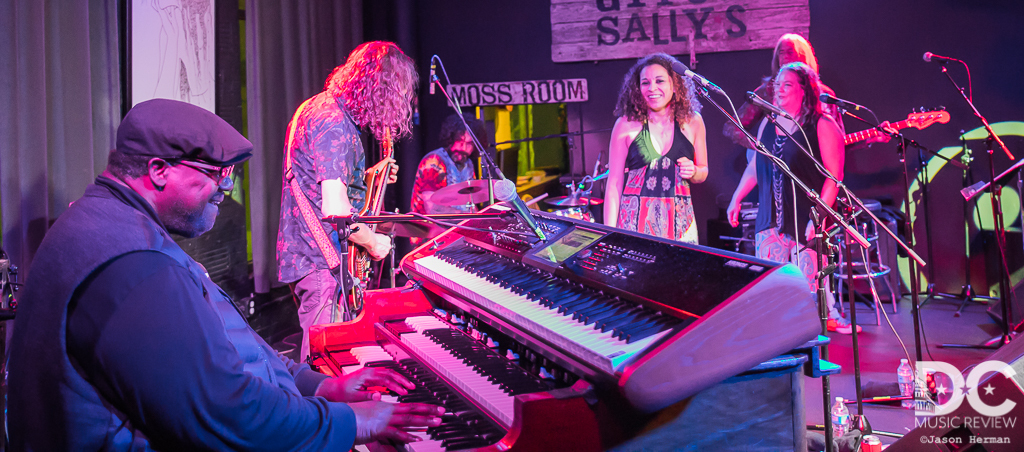
John Kadlecik and the majority of Summer Solstice 2018 performers on stage.
JK: Well you know, it’s hard to say. If it becomes a regular D.C. event – I have been doing four day events at Gypsy Sally’s for Thanksgiving – maybe we’re talking about that, pre-announcement – my next show is at The Hamilton on the 3rd of August. So that’s sort of the buzz I’m trying to push. The Hamilton folks have also opened a new place in Maryland called The Soundry and I’ll be there on the 2nd, Hamilton on the 3rd and then Bears Picnic on the 4th and that’ll be with Jay Wavy Dave and I’ll have Benji Poreckie. Benji just recorded this past Tuesday with Jay and Robin. They stayed in town to do some recording sessions with me at Tonal Park which used to be Airshow. I’m about to post some YouTube links of some music improvisations that we captured in the process of doing tracks for some songs I wrote. But anyways, we’re kind of jumping around here (laughs).
KM: No worries, I’m on the same page. We talked a bit about the fact that you collaborate a lot and you put a lot of things together. I read an article or interview that quoted you as saying that said a music group is a social experiment and sometimes it works and you take it on the road and sometimes it’s one and done. Is there ever a time when you aren’t planning your next musical experiment?
JK: I don’t know, I’m also fond of saying that I start bands as a hobby (laughs). I kind of always have various projects that if the people come along for them, then they’ll happen, maybe tomorrow. They’re sort of waiting for the right people to be available for. I have several projects like that, several of them have been, you know I’ve had one that’s been brewing for as long as the D.C Mystery Cats was brewing but it still hasn’t quite the right combination of people to bring out (laughs). I might have one more kind of Grateful Dead tribute-cover thing that might be happening in there too but I kind of have a vision for how that’s would be and it would really have to be that.
KM: All the elements would have to come together.
JK: Right, exactly I wouldn’t want to just do it to do it and just have it be whatever (laughs).
KM: So we have talked about the music and the venues and touched on the styles of music and I don’t want to say you’ve been playing to the same crowd but you definitely have a ‘type’ that come to your shows. Since the revival of Dead & Company starting with the ‘Fare Thee Well’ run – have you seen a change in the crowds at your shows? I mean, you’ve got the old school Deadheads and then their kids that grew up on it because of them and then you have the even younger generation didn’t have any idea what Dead was and now they’re discovering it and saying ‘Hey, I like this!’
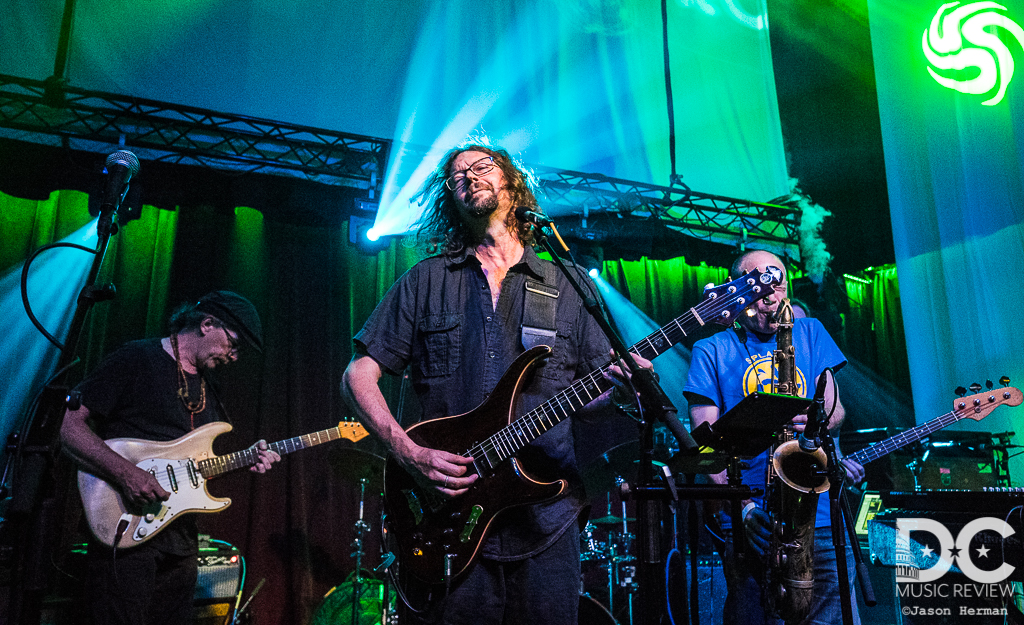
JK: By the time I was getting into the Dead, the age spread of a Dead show was newborn to centenarian (laughs). But I really haven’t noticed a change. As far as, you know, I’ve always noticed young kids. There’s something about the Dead music that appeals to early 20-somethings, the sort of artistically curious mind or wanting to see deeper than what the commercial offerings are and then once you crack through you find out what’s active and what the histories are and it’s a lot to engage someone in. Some people are early as 15, 16 whatever. With Dark Star Orchestra and all the bands previously all bands subsequently, I just see that 15-25 year old age needing something more than the top 40 has to offer and they find this Grateful Dead music. It may be a flowery passage but I believe it - Grateful Dead is like the America’s heart song. It’s really the real melting pot music. The idealized melting pot artistic blender of everything that is good and right in American music (laughs).
KM: Good way to put it! So I’ll have to pose this one a little different knowing all you’ve done already but is there something left on your musical bucket list? A place to play, a person to see, some collaborations, something along those lines? You mentioned there are a few music projects that you are waiting for the right elements to come together but anything else that’s on the list?
JK: I try to avoid those types of mindsets in general just because it can close you off to, you know your expectations of a situation can close you off to what’s happening now.
KM: That makes sense.
JK: But I guess a bucket list – well the big super dreams are always like ‘Oh yeah right’ but I figure those are the ones you gotta shoot for to get to the ones that are maybe within the realm of possibility but slightly farther than you thought you could go. You gotta go realllllllly far. One of my dreams would be to um, to be in the first musical group to perform in some sort of zero gravity entertainment environment. A space station resort, or outer colony moon of Saturn type resort or if there’s the equivalent of a cruise ship that takes people to the moon, I wanna be on the first space cruise (laughs).
KM: What would you call that tour?
JK: I have no idea – Justifying Gravity Phase II (laughs)

John Kadlecik with one of his signature snarls.
KM: Well there you go, kinda like you said you gotta aim really, REALLY high – like the saying ‘Shoot for the moon, even if you miss you’ll still be among the stars’. It’s way out there but maybe while trying to get there you’ll have all this other cool stuff happen along the way. Sign me up for when tickets go on sale for that though.
JK: (laughs) Alright – Jam Cruise 37. Maybe we’ll have a low orbital party
KM: I read somewhere that you had said something regarding when you were playing for DSO and the fact that people were under the assumption you guys would go and play a whole show note for note. You mentioned that you would pick a show and listen to a few of the songs from it and try to get a feel for the vibe of the show and use that.
JK: Yeah, often picking sets was about learning new songs so when we would learn a new song for a new period, we’d listen to several versions of that song and sort of interpolate, rather than play note for note. It’s more like ‘What if the Grateful Dead played the same songs the next day’ (laughs).
KM: Last but not least, when you’re just sitting around, what music are you listening to? What are you putting on that is feel good music for you?
JK: I really like the new John Prine record for example. When I throw up a casual playlist there’s usually some Bob Marley, Bob Dylan and John Coltrane in addition to whatever else. Those are the three cornerstones of ultimate, adult, rock-n-roll poetry, ultimate music to make people feel good – the Bob Marley. And the musical artist that I consider to have advanced the art and science of live performance the furthest, John Coltrane (laughs). I think he took music, you know, the inner concepts of music to a place where not many people have caught up with yet, even in the jazz world. There’s a lot of people that emulate early Coltrane but where he went with his sort of tri-tonality stuff – I think it’s the sort of stuff that we’ll use to open up the wormholes (laughs) and things like that in the future.
KM: (laughs) It’ll help us find the vortex. You could play that as your elevator music on the space cruise to Mars!
JK: Right or what powers the engine – you pop a Coltrane crystal in there (laughs).
KM: Well John that’s all I got today so thank you for the time and I hope to see you when you’re back in town for the August show run.
JK: Alright, well thanks a lot. It was good talking to you, I’m gonna get back to the rural life.
To purchase and see John Kadlecik at one of his upcoming DC / Mid-Atlantic Appearances please click on one of the choices below.
John Kadlecik will next appear in the DMV as part of the 2nd Annual Days Between Concert Series at The Hamilton in Washington DC and the satellite celebration at The Soundry in Columbia, MD. Look for more exciting details about the Days Between event shortly.
Friday, August 3 - John Kadlecik at The Hamilton in Washington, DC
Thursday, August 2 - John Kadlecik at The Soundry in Columbia, MD
Related Articles
Related Articles
Related Articles
